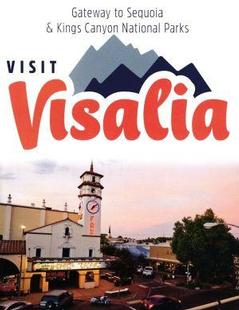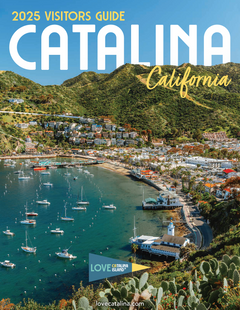Basics
- Location:
- Northwestern Oregon through Deschutes and Willamette National Forests.
- Surface:
- Paved
- Length:
- 82 miles (132 km)
- Time:
- Two hours to drive the Byway or five hours to stop at places along the way.
- Season:
- Drivable year round
- Fees:
- Parking passes can be purchased from the ranger station, allowing you to park and hike the trails along this Byway.
Description
McKenzie Pass-Santiam Pass Scenic Byway illustrates best how the Cascade Range was formed. The region is home to giant dormant volcanoes that are capped with glaciers and bedded in two National Forests. The sheer power of nature is sure to be a lasting memory and a freeing experience.
McKenzie Pass-Santiam Pass Scenic Byway starts in Sisters, Oregon, 22 miles north from Bend. Start in Sisters along HWY 20. Continue as the road turns into HWY 126 and later into HWY 242 as it finishes back in Sisters.
The alpine environment along the drive is a rugged place to take in and to enjoy. Hiking is widely available and many alpine lakes offer good places to try to get to. The Pacific Crest National Scenic Trail crosses the byway and is highly recommended. Windy Point and the Belknap viewpoint are great overlook areas and are must sees along with several waterfalls that can be found on the way.
Tourism Resources
Helpful Links
Tourism Resources
Points of Interest
Points of Interest Along The Way
Belknap Viewpoint (OR)
From this viewpoint, you can see the Belknap Crater Complex, clear evidence of "recent" volcanic activity. The Belknap Crater Complex, a broad shield five miles in diameter and about 1,700 feet thick, was formed by fields of lava vents that erupted profusely about 1500 years ago.
One exception is Little Belknap, which erupted about about 3000 years ago. When Little Belknap was formed, lava poured twelve miles to the west and ash was ejected from the northernmost of the two summit craters.
Directions
Milepost 2.7 on the byway.
Dee Wright Observatory (OR)
The Dee Wright Observatory, a stone memorial named for the CCC foreman who oversaw its construction, offers panoramic views of the Cascade Mountain Range, as far north as Mt. Hood. A bronze peak-finder in the observatory points to the geologic features in the sweeping lava fields where the observatory is situated.
A barrier-free access trail takes visitors to an interpretive platform, which offers information on the history of the structure built in the 1930s by the Civilian Conservation Corps. A half-mile interpretive trail takes visitors on a 30-minute walk through lava flows and offers spectacular vistas of the surrounding landscape.
Directions
On the byway at milepost 3.5
Deschutes National Forest (OR)
The Deschutes National Forest is a recreational haven, pure and simple: these 1.8 million acres include five wilderness areas (200,000 acres), six cool rivers, 157 lakes and reservoirs, approximately 1,400 miles of trails, and the unique landscape of Newberry National Volcanic Monument.
Popular activities in the national forest include hiking,fishing, rafting, kayaking, canoeing and camping. Other popular activities are mountain biking, cross-country skiing and snowmobiling, especially in the winter when the road closes due to snow.
Directions
The Byway makes a route right through this national forest.
McKenzie Ranger Station and Information Portal - West (OR)
Get Byway and area information here. Look specifically for maps and information on whitewater rafting, fishing, hiking, camping and other recreational activities in the Willamette National Forest.
Directions
Located at 57600 McKenzie Hwy in McKenzie Bridge, OR.
Mount Washington Overlook (OR)
From this overlook, you can get a great view of 7794-foot Mt. Washington. Mt. Washington is interesting because it started out as a shield volcano, and then another thick, different kind of cone was built on top of it by eruptions. Then streams and glaciers dug grooves into it and started peeling away the "superstructure" of the volcano, giving the peak a unique jagged look.
From this viewpoint, you can get an idea just how rapidly changes in natural processes (such as climatic shifts and the onslaught of pests like the spruce budworm) can affect the natural environment. You can see the changes by looking at the mixed conifer forest and the thinning of vegetation along the roadside.
Directions
At milepost 9.3 on the byway.
Pacific Crest National Scenic Trail (OR)
Zigzagging its way from the Mexican border near Campo, California to Manning Park, Canada through California, Oregon and Washington, the Pacific Crest Trail (PCT) boasts the greatest elevation changes of any of America's eight National Scenic Trails, allowing it to pass through six out of seven of North America's ecozones including high and low desert, old-growth forest and artic-alpine country. Indeed, the PCT is a trail of diversity and extremes. From scorching desert valleys in Southern California to rain forests in the Pacific Northwest, the PCT offers hikers and equestrians a unique, varied experience.
Created by an act of Congress in 1968, and officially completed in 1993, the Pacific Crest covers a distance of 2,638 miles (4,247 kilometers) and is divided into five distinct sections: Southern California, Central California, Northern California, Oregon, and Washington.
Directions
The Trail crosses the Byway at McKenzie Pass and at Santiam Pass.
Proxy Falls (OR)
The Upper Proxy Falls and the Lower Proxy Falls, referred to collectively as the Proxy Falls, can be accessed by hiking a loop trail in the Three Sisters Wilderness area.
Upper Proxy Falls is interesting because there is no direct outlet for its circular basin's calm pool of water: its substantial volume of water (which originates from a group of small springs that originate about 600 feet above the valley floor) can only percolate into the lava subsurface.
The water for Lower Proxy Falls, supplied by Proxy Creek and Shadow Creek, rushes over a steep, bulging rock for 200 feet before it free falls to the base.
Directions
West from McKenzie Pass, located between milepost 64 and 65, it is an unmarked trailhead and it is a short hike to the falls.
Sahalie and Koosah Falls (OR)
Sahalie and Koosah Falls are located on the old historic route locally known as the Clear Lake Cutoff. The names for these falls come from 'Chinook Jargon', a local rudimentary trade language used on the route in the mid-1800s between European traders and local native tribes.
In Chinook Jargon, 'Sahalie' means heaven,above, and up high. Sahalie Falls drops 120 feet and has an average water temperature of 34 degrees Fahrenheit. Koosah Falls (which means sky in Chinook Jargon) drops 70 feet, and its headwaters are at Clear Lake, where the springs bubble clear, cold, and blue.
Directions
At mileposts 19.5 and 0.4 on the byway.
Three Sisters (OR)
The three tallest peaks in Oregon, after Mt. Hood and Mt.Jefferson, are the snowcapped Three Sisters. The North Sister (10,085'), Middle Sister (10,047'), and South Sister (10,358'), are all very popular with climbers (the North and Middle Sisters are especially challenging), and hikers (the popular Pacific Crest National Recreation Trail traverses their western flank).
Here's an interesting fact about the Sisters: they were almost going to be named Faith, Hope and Charity, but the Oregon Geographic Names Board turned down this proposal in 1975.
Directions
East of the Cascades
Willamette National Forest (OR)
The Willamette National Forest offers a wide variety of recreation opportunities during summer and winter months. Its central location makes it accessible to day-trippers and vacationers alike.
Directions
The byway makes a route right through both national forests.





















